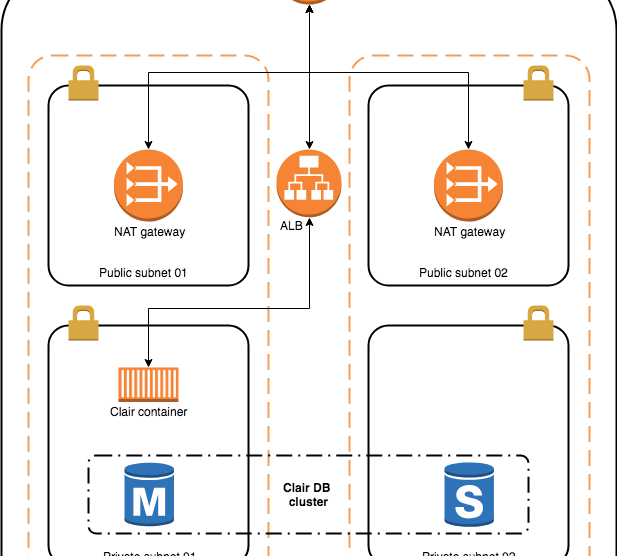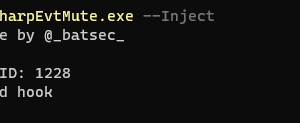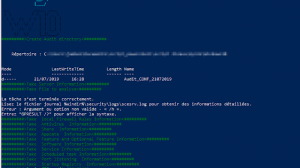[sc name=”ad_1″]
Integration of Clair and Docker Registry (supports both Clair API v1 and v3)
Klar is a simple tool to analyze images stored in a private or public Docker registry for security vulnerabilities using Clair https://github.com/coreos/clair. Klar is designed to be used as an integration tool so it relies on enviroment variables. It’s a single binary which requires no dependencies.
Klar serves as a client which coordinates the image checks between the Docker registry and Clair.
Binary installation
The simplest way is to download the latest release (for OSX and Linux) from https://github.com/optiopay/klar/releases/ and put the binary in a folder in your PATH (make sure it has execute permission).
Installation from source code
Make sure you have Go language compiler installed and configured https://golang.org/doc/install
Then run
go get github.com/optiopay/klarmake sure your Go binary folder is in your PATH (e.g. export PATH=$PATH:/usr/local/go/bin)
Usage
Klar process returns if 0 if the number of detected high severity vulnerabilities in an image is less than or equal to a threshold (see below) and 1 if there were more. It will return 2 if an error has prevented the image from being analyzed.
Klar can be configured via the following environment variables:
CLAIR_ADDR– address of Clair server. It has a form ofprotocol://host:port–protocolandportdefault tohttpand6060respectively and may be omitted. You can also specify basic authentication in the URL:protocol://login:password@host:port.CLAIR_OUTPUT– severity level threshold, vulnerabilities with severity level higher than or equal to this threshold will be outputted. Supported levels areUnknown,Negligible,Low,Medium,High,Critical,Defcon1. Default isUnknown.CLAIR_THRESHOLD– how many outputted vulnerabilities Klar can tolerate before returning1. Default is0.CLAIR_TIMEOUT– timeout in minutes before Klar cancels the image scanning. Default is1DOCKER_USER– Docker registry account name.DOCKER_PASSWORD– Docker registry account password.DOCKER_TOKEN– Docker registry account token. (Can be used in place ofDOCKER_USERandDOCKER_PASSWORD)DOCKER_INSECURE– Allow Klar to access registries with bad SSL certificates. Default isfalse. Clair will need to be booted with-insecure-tlsfor this to work.DOCKER_TIMEOUT– timeout in minutes when trying to fetch layers from a docker registryDOCKER_PLATFORM_OS– The operating system of the Docker image. Default islinux. This only needs to be set if the image specified references a Docker ManifestList instead of a usual manifest.DOCKER_PLATFORM_ARCH– The architecture the Docker image is optimized for. Default isamd64. This only needs to be set if the image specified references a Docker ManifestList instead of a usual manifest.REGISTRY_INSECURE– Allow Klar to access insecure registries (HTTP only). Default isfalse.JSON_OUTPUT– Output JSON, not plain text. Default isfalse.FORMAT_OUTPUT– Output format of the vulnerabilities. Supported formats arestandard,json,table. Default isstandard. IfJSON_OUTPUTis set to true, this option is ignored.WHITELIST_FILE– Path to the YAML file with the CVE whitelist. Look atwhitelist-example.yamlfor the file format.IGNORE_UNFIXED– Do not count vulnerabilities without a fix towards the threshold
Usage:
CLAIR_ADDR=localhost CLAIR_OUTPUT=High CLAIR_THRESHOLD=10 DOCKER_USER=docker DOCKER_PASSWORD=secret klar postgres:9.5.1Debug Output
You can enable more verbose output but setting KLAR_TRACE to true.
- run
export KLAR_TRACE=trueto persist between runs.
Dockerized version
Klar can be dockerized. Go to $GOPATH/src/github.com/optiopay/klar and build Klar in project root. If you are on Linux:
CGO_ENABLED=0 go build -a -installsuffix cgo .If you are on Mac don’t forget to build it for Linux:
GOOS=linux go build .To build Docker image run in the project root (replace klar with fully qualified name if you like):
docker build -t klar .Then pass env vars as separate --env arguments, or create an env file and pass it as --env-file argument. For example save env vars as my-klar.env:
CLAIR_ADDR=localhost
CLAIR_OUTPUT=High
CLAIR_THRESHOLD=10
DOCKER_USER=docker
DOCKER_PASSWORD=secretThen run
docker run --env-file=my-klar.env klar postgres:9.5.1Amazon ECR support
There is no permanent username/password for Amazon ECR, the credentials must be retrived using aws ecr get-login and they are valid for 12 hours. Here is a sample script which may be used to provide Klar with ECR credentials:
DOCKER_LOGIN=`aws ecr get-login --no-include-email`
PASSWORD=`echo $DOCKER_LOGIN | cut -d' ' -f6`
REGISTRY=`echo $DOCKER_LOGIN | cut -d' ' -f7 | sed "s/https:////"`
DOCKER_USER=AWS DOCKER_PASSWORD=${PASSWORD} ./klar ${REGISTRY}/my-imageGoogle GCR support
For authentication against GCR (Google Cloud Registry), the easiest way is to use the application default credentials. These only work when running Klar from GCP. The only requirement is the Google Cloud SDK.
DOCKER_USER=oauth2accesstoken
DOCKER_PASSWORD="$(gcloud auth application-default print-access-token)"With Docker:
DOCKER_USER=oauth2accesstoken
DOCKER_PASSWORD="$(docker run --rm google/cloud-sdk:alpine gcloud auth application-default print-access-token)"
[sc name=”ad-in-article”]





















Add Comment